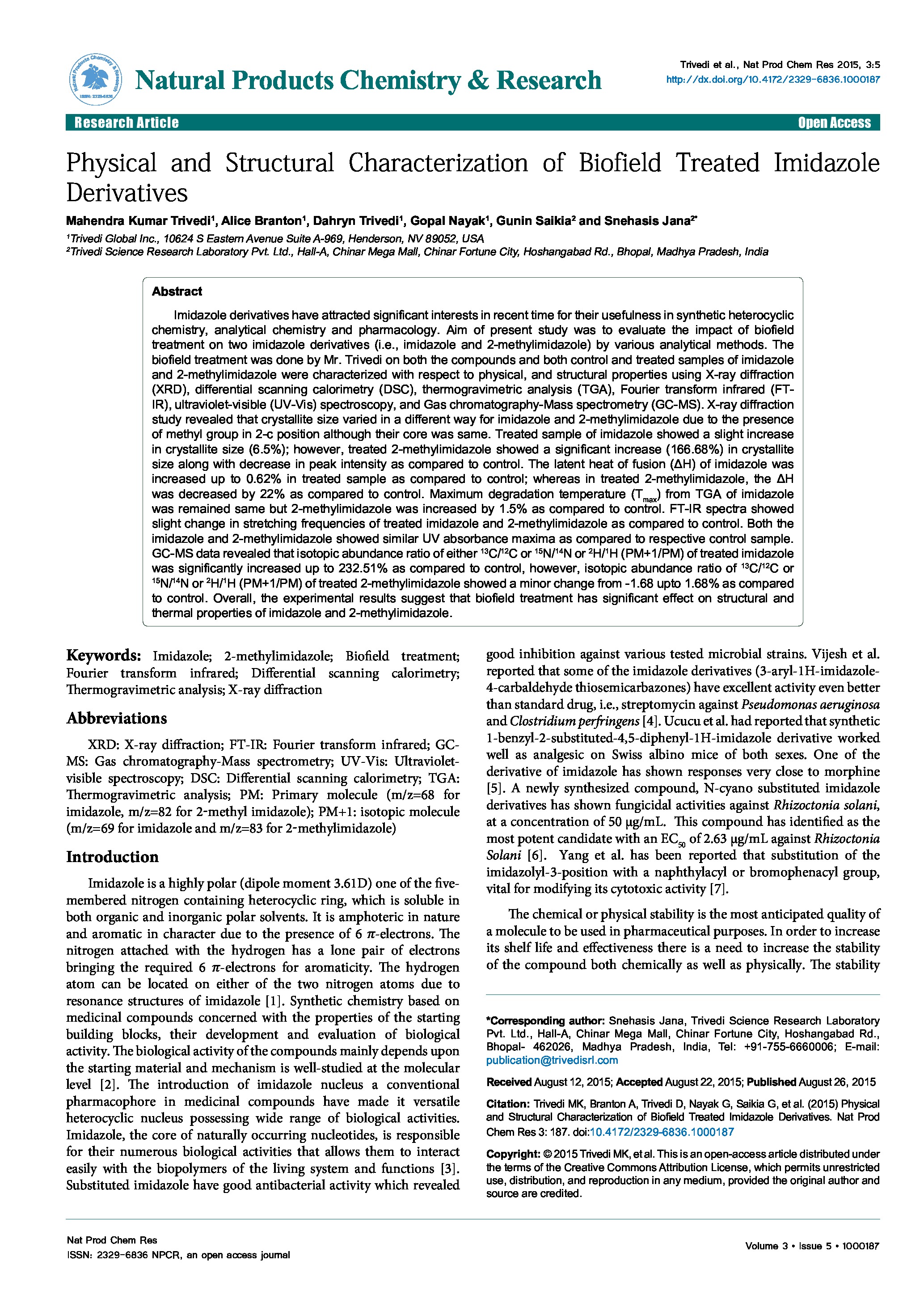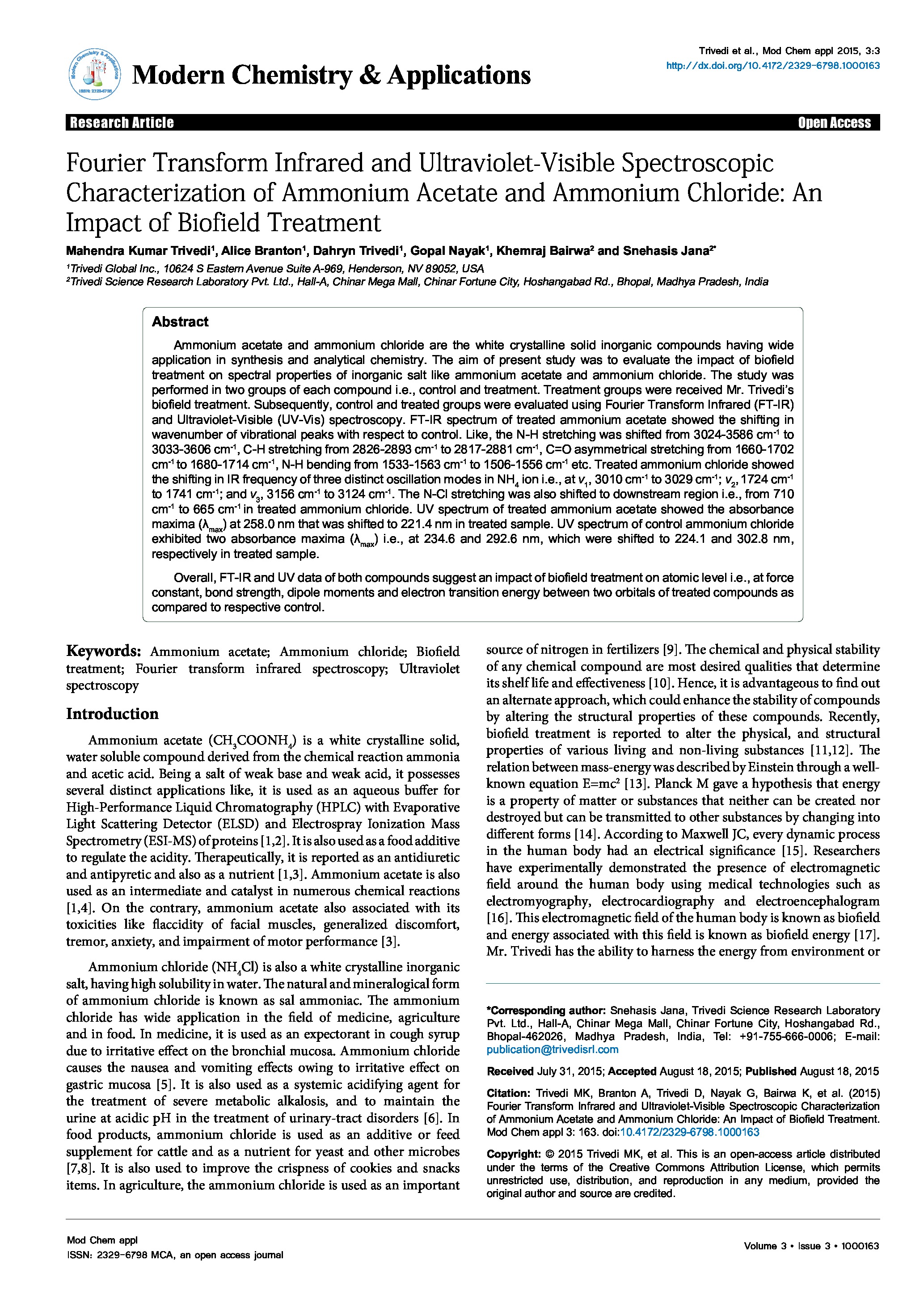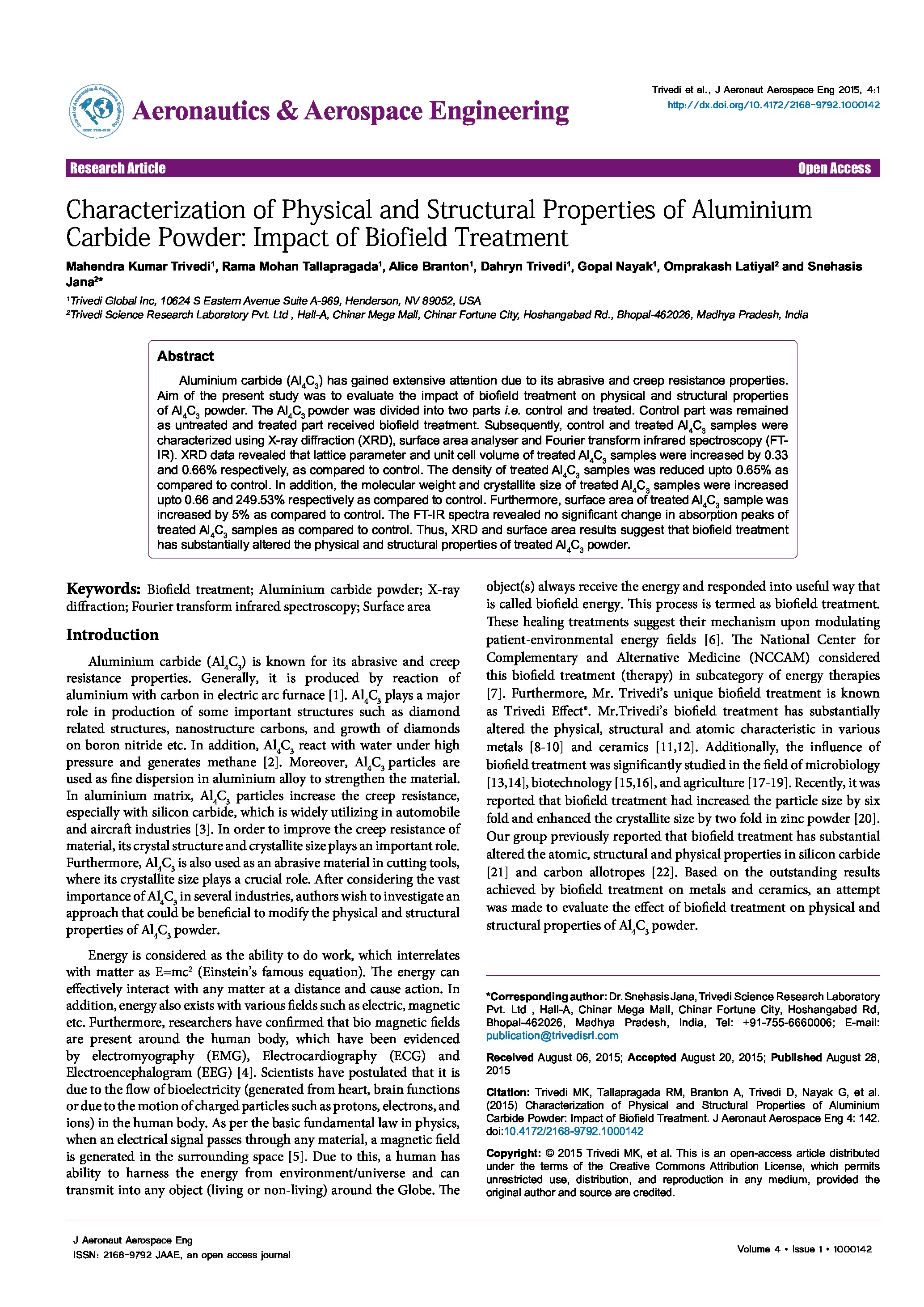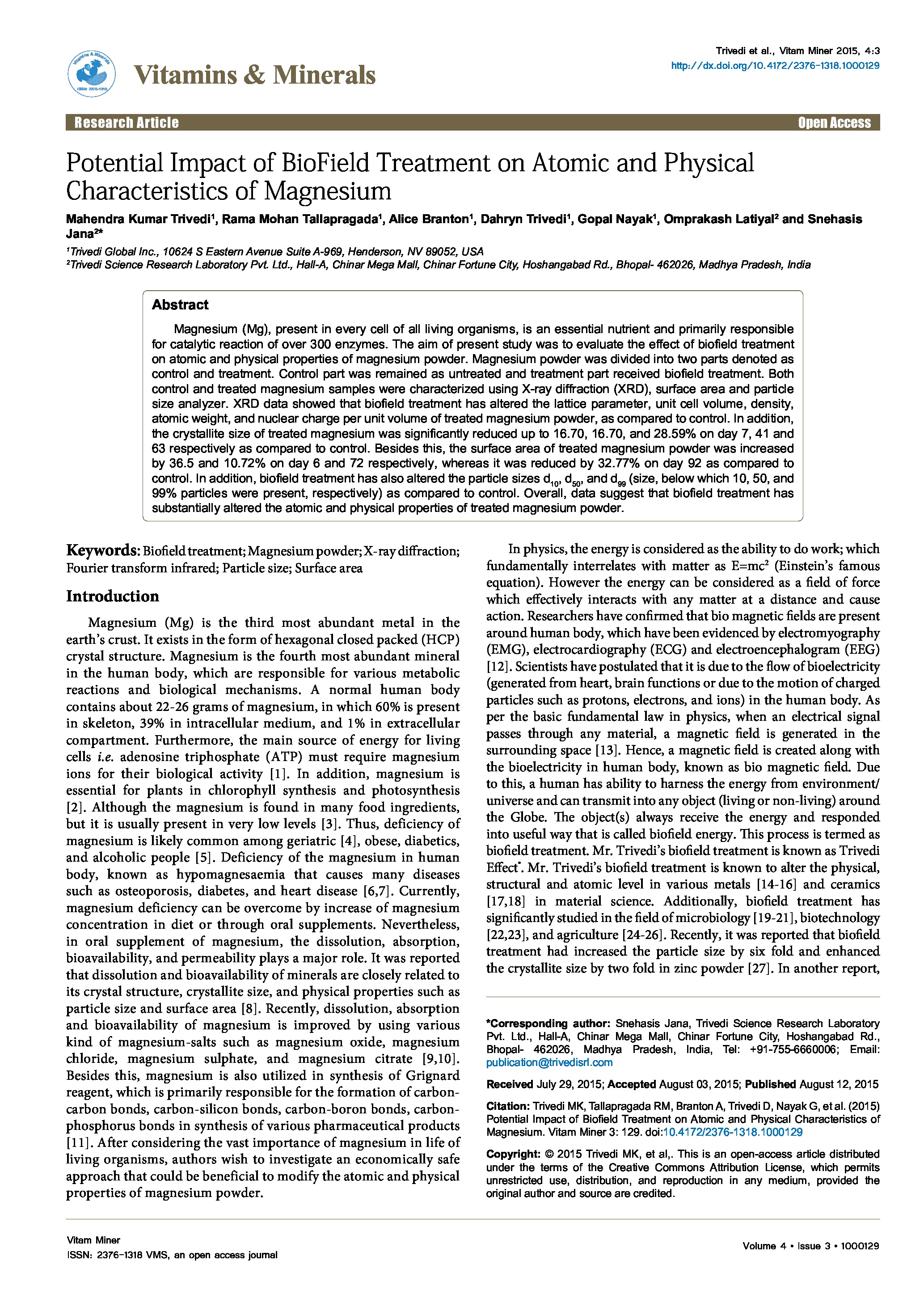Date of upload:
24.12.2016
Co-author:
Mahendra Kumar Trivedi, Rama Mohan Tallapragada, Alice Branton, Dahryn Trivedi, Omprakash Latiyal, Snehasis Jana
Abstract:
Magnesium (Mg), present in every cell of all living organisms, is an essential nutrient and primarily responsible for catalytic reaction of over 300 enzymes. The aim of present study was to evaluate the effect of biofield treatment on atomic and physical properties of magnesium powder. Magnesium powder was divided into two parts denoted as control and treatment. Control part was remained as untreated and treatment part received biofield treatment. Both control and treated magnesium samples were characterized using X-ray diffraction (XRD), surface area and particle size analyzer. XRD data showed that biofield treatment has altered the lattice parameter, unit cell volume, density, atomic weight, and nuclear charge per unit volume of treated magnesium powder, as compared to control. In addition, the crystallite size of treated magnesium was significantly reduced up to 16.70, 16.70, and 28.59% on day 7, 41 and 63 respectively as compared to control. Besides this, the surface area of treated magnesium powder was increased by 36.5 and 10.72% on day 6 and 72 respectively, whereas it was reduced by 32.77% on day 92 as compared to control. In addition, biofield treatment has also altered the particle sizes d10, d50, and d99 (size, below which 10, 50, and 99% particles were present, respectively) as compared to control. Overall, data suggest that biofield treatment has substantially altered the atomic and physical properties of treated magnesium powder.




